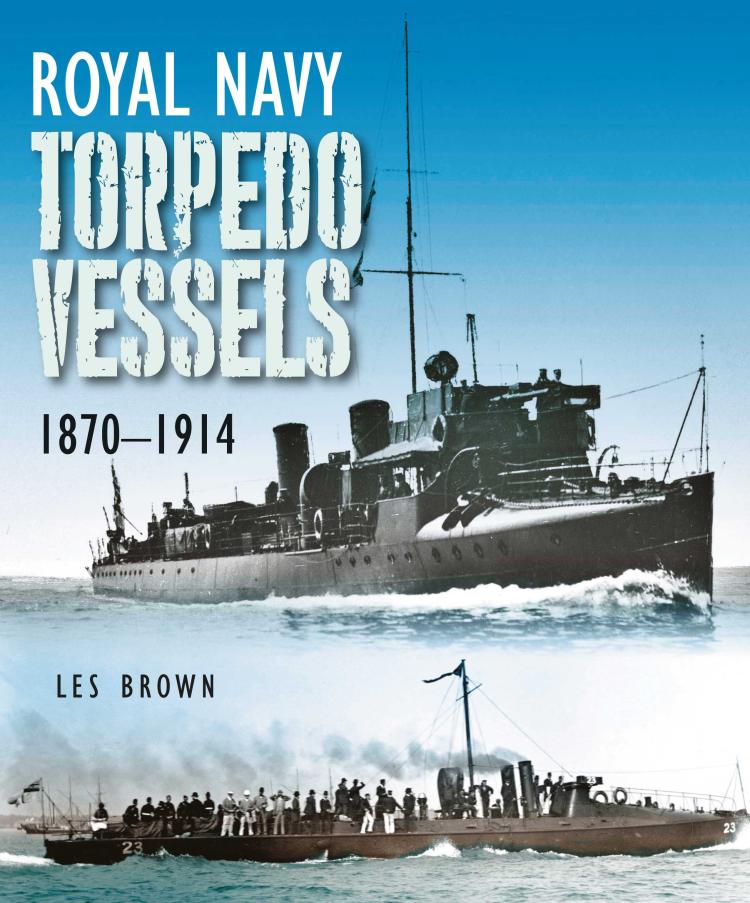"Royal Navy Torpedo Vessels, 1870-1914"
- Subject: Spring 2023 Catalog | Battleships, Destroyers and More | World of Warships Booklist
- Format:
Hardcover
- Pages:
200pages
- Illustrations:
200+ b/w and color illustrations
- Published:
February 15, 2023
- ISBN-10:
1399022857
- ISBN-13:
9781399022859
- Product Dimensions:
10.87 × 8.62 × 1 in
- Product Weight:
35 oz
Overview
The self-propelled, or locomotive torpedo was a game-changer in the history of naval warfare. For the first time the largest warship could be sunk by a weapon carried by the smallest, and most navies were quick to see the potential. Although the 19th-century Royal Navy had a reputation for technological conservatism, it was an ‘early adopter’ of the torpedo and was instrumental in the development of the small fast craft that became the delivery system of choice, the steam torpedo boat.
Before Robert Whitehead’s revolutionary invention that made the self-propelled torpedo a practical weapon, torpedoes were derived from earlier underwater explosive devices – mines, spar and towed torpedoes. The Admiralty was so impressed it purchased the rights to Whitehead’s device, and thereafter the Royal Navy made much of the early running in torpedo boat design. In this they were greatly assisted by existing boatbuilders like Thornycroft and Yarrow who already specialized in small fast craft.
Les Brown has written an in-depth study of the steam torpedo boat in the Royal Navy. The core of this book is a detailed developmental history of British torpedo craft, from the early experiments like Vesuvius and Polyphemus, through the 1st Class TBs to the so-called Coastal Destroyers of the early twentieth century. There are also separate chapters on 2nd Class boats, on Torpedo Gunboats and on the ‘Torpedo Depot Ships’ Hecla and Vulcan.
The book concludes with appendices devoted to background issues like quick-firing guns and reports on performance of the boats in various circumstances. As it fills a surprising gap in the technical history of British warships, this book should appeal to naval enthusiasts, modelmakers and historians.
Before Robert Whitehead’s revolutionary invention that made the self-propelled torpedo a practical weapon, torpedoes were derived from earlier underwater explosive devices – mines, spar and towed torpedoes. The Admiralty was so impressed it purchased the rights to Whitehead’s device, and thereafter the Royal Navy made much of the early running in torpedo boat design. In this they were greatly assisted by existing boatbuilders like Thornycroft and Yarrow who already specialized in small fast craft.
Les Brown has written an in-depth study of the steam torpedo boat in the Royal Navy. The core of this book is a detailed developmental history of British torpedo craft, from the early experiments like Vesuvius and Polyphemus, through the 1st Class TBs to the so-called Coastal Destroyers of the early twentieth century. There are also separate chapters on 2nd Class boats, on Torpedo Gunboats and on the ‘Torpedo Depot Ships’ Hecla and Vulcan.
The book concludes with appendices devoted to background issues like quick-firing guns and reports on performance of the boats in various circumstances. As it fills a surprising gap in the technical history of British warships, this book should appeal to naval enthusiasts, modelmakers and historians.
About the Author
Editorial Reviews
"Royal Navy Torpedo Vessels 1870-1914 fills an important gap in the available literature on the detailed design and technical development of this type of ship. Importantly, the author's approach of utilising official records, contemporary literature, and drawing on his own experience to inform his discussion leads to a sound analytical approach to the subject. The text is complemented with excellent photos, technical drawings, diagrams and shipbuilders’ drawings." --Australian Naval Institute




